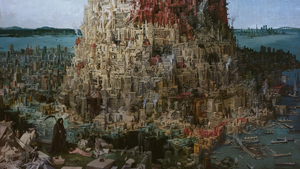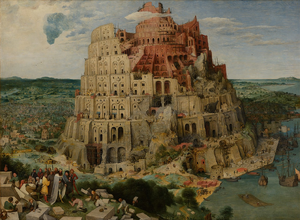Cultural References
Jump to navigation
Jump to search
Several things in Let It Die are (or at least, may have been inspired by) real-world cultural references, both popular and obscure. Some of these may be listed on the pages of each subject, but this page will attempt to compile them all into one place.
Voice Actors
Game World
- The Tower of Barbs itself is a reference to the Tower of Babel Christian Biblical story, an origin story for different human languages. In the story, humans attempted to build a tower tall enough to reach Heaven, but seeing this, God punished them by mixing up their speech, so they could no longer understand each other and complete the project. Indeed, the name of the final area, TENGOKU, is the Japanese word for "Heaven", and it is by far the largest area in the game.
One of the title screens for Let It Die is also a direct reference to a painting of the Tower of Babel, painted by Pieter Bruegel in 1563, with Uncle Death taking the place of King Nimrod. The painting itself is one of 2 surviving paintings out of the 3 that Bruegel created of the Tower of Babel. - The Tower's exterior design, as well as some places inside the Tower (particularly Jackson's area), seem very reminiscent of the Kowloon Walled City, a former real-life place that was located near Kowloon City, Hong Kong. While the city itself only covered a little over 7 acres, many tall buildings were built together in very close proximity, and at one point held a maximum population of 50,000 people. The city was demolished in 1994, but it's design is still referenced often in popular culture.
- When looking at the map of the Tower, the different colored lines of the escalators are similar to maps of Japanese subway stations.


